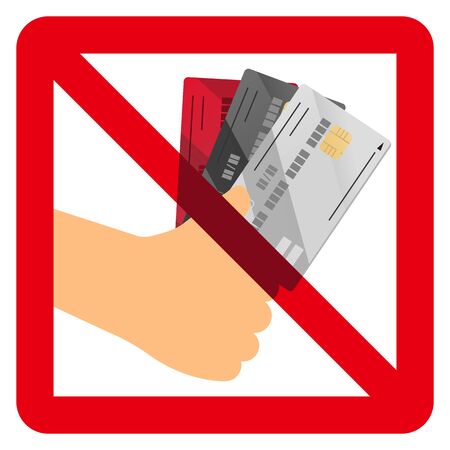What is a Credit Card and How Does It Work?
In the United States, credit cards are a common part of everyday financial life. They look like regular plastic cards, but they come with powerful features and some hidden risks. A credit card allows you to borrow money from a bank or credit card company up to a certain amount—this is called your credit limit. When you use your card to make purchases, you’re not spending your own money right away; instead, you’re borrowing money that you’ll need to pay back later.
Every month, your credit card company sends you a statement showing what you’ve spent and how much you owe. This period is known as the payment cycle. You can choose to pay off the entire balance or just make a minimum payment. If you pay less than the full amount, interest charges will kick in. Interest is basically the cost of borrowing money, and it can add up quickly if you don’t pay your balance in full each month.
Credit cards offer flexibility and convenience, but understanding how they work is key to avoiding unwanted debt. Used wisely, they can help build your credit history and make managing expenses easier—but if you’re not careful, plastic spending can turn into a real financial headache.
2. The Advantages of Using Credit Cards
For many American families, credit cards offer a variety of benefits that go beyond simply making purchases. While it’s important to be cautious about debt, understanding the perks of using credit cards responsibly can help you make smarter financial decisions. Below, we break down some of the top advantages credit cards bring to typical U.S. households.
Convenience and Flexibility
Credit cards are widely accepted across the United States, making it easy to shop online, pay bills, or handle everyday expenses without carrying large amounts of cash. Whether you’re at the grocery store, booking a flight, or ordering pizza for family movie night, your credit card is a convenient payment tool.
Building Credit History
Using a credit card and paying off your balance on time each month helps build a positive credit history. This is especially important in America, where your credit score influences everything from renting an apartment to qualifying for a mortgage or car loan. Responsible use shows lenders that you can manage debt wisely.
Rewards Programs
Many credit cards offer rewards like cash back, airline miles, or points for every dollar spent. For example, a family might use a rewards card for gas and groceries—two major household expenses—and then redeem those points for gift cards or statement credits during the holidays.
| Type of Reward | Typical Example |
|---|---|
| Cash Back | 1-5% back on purchases (e.g., 3% on groceries) |
| Travel Points | Miles earned for flights and hotels |
| Retail Rewards | Points redeemable at favorite stores (like Target or Amazon) |
Fraud Protection and Security
If your wallet gets lost or stolen, most major U.S. credit cards offer zero-liability fraud protection—meaning you won’t be held responsible for unauthorized charges if you report them quickly. This gives peace of mind compared to debit cards or cash.
Emergency Use
A credit card can be a lifesaver during unexpected situations, such as emergency home repairs or medical bills. Having available credit ensures you’re prepared when life throws you a curveball, which is reassuring for many families living paycheck to paycheck.
Key Takeaway
While it’s important to use credit cards thoughtfully to avoid debt traps, the advantages—from convenience and rewards to security and credit building—can make them valuable tools in managing your family’s finances.
![]()
3. Common Pitfalls and the Psychology of Plastic Spending
Credit cards can feel like magic wands—swipe now, worry later. But this convenience is exactly what makes them risky for many families. One major pitfall is overspending. With a credit card, it’s easy to buy things you might not be able to afford if you were paying cash. This can lead to monthly statements that are much higher than expected, putting a real strain on your family budget.
The psychology behind “plastic spending” is powerful. Studies show that people tend to spend more when using credit cards instead of cash. That’s because swiping doesn’t give the same feeling of loss as handing over hard-earned dollars. This disconnect can make it difficult to realize just how much you’re actually spending until the bill arrives.
Impulse Buying and Emotional Spending
Another risk is impulse buying. Online shopping and quick checkouts at stores encourage spur-of-the-moment purchases—especially when you don’t physically see money leaving your wallet. Credit cards can also make emotional spending easier, whether you’re celebrating a win or trying to cheer yourself up after a tough day.
The “Buy Now, Pay Later” Trap
The “buy now, pay later” mentality promoted by credit cards—and now even by some online retailers—can lull you into thinking payments will be manageable in the future. However, small balances can quickly snowball due to interest charges, especially if you only pay the minimum each month.
How Credit Cards Can Disrupt Family Budgets
It’s easy to lose track of your family’s financial goals when plastic spending becomes a habit. Without regular monitoring and honest conversations about money, credit card debt can creep up quietly, making it harder to save for important things like vacations, emergencies, or college funds. Being aware of these common pitfalls—and understanding why credit cards make overspending so tempting—is the first step toward building healthier financial habits for your household.
4. Understanding Debt: Interest, Minimum Payments, and Fees
If you’re like many American families, using credit cards can feel almost too easy—until the monthly bill arrives. Understanding how credit card debt really works is key to protecting your household budget and avoiding financial headaches.
How Credit Card Debt Accumulates
When you use a credit card, you’re borrowing money from the bank to pay for your purchases. If you don’t pay the full statement balance by the due date, the remaining amount becomes debt and starts to accrue interest. This means you’ll owe more than you originally spent, making it harder to catch up over time.
What Happens When You Only Pay the Minimum
Credit card statements often highlight a “minimum payment” option, but paying only this amount can be a costly trap. Here’s why:
| Payment Approach | Impact on Debt | Interest Paid Over Time |
|---|---|---|
| Pay Full Balance | No debt carried forward | $0 (if paid on time) |
| Pay More Than Minimum | Debt decreases faster | Lower total interest |
| Pay Only Minimum | Debt lingers for years | Much higher total interest |
The minimum payment usually covers just a small portion of your balance plus monthly interest charges. If you keep making only the minimum payments, it can take many years—and sometimes decades—to pay off even a modest balance.
Common Fees and Costs to Watch Out For
Banks make money not just from interest but also from various fees that can sneak up on busy families. Here are some typical fees found on American credit cards:
- Late Payment Fees: Charged if your payment isn’t received by the due date.
- Annual Fees: Some cards charge a yearly fee just for having the account open.
- Cash Advance Fees: Extra charges for withdrawing cash from your credit card.
- Balance Transfer Fees: When moving debt from one card to another, there’s often a percentage fee attached.
Keeping track of these costs is important for any family trying to stick to a household budget. Make sure you read the fine print so unexpected fees don’t derail your financial plans!
5. Credit Card Debt’s Impact on Your Financial Health
Carrying high balances on your credit cards can do more than just add stress to your daily life—it can have a lasting effect on your overall financial health. When you consistently owe more than you can pay off each month, it impacts your credit score, which is a key factor in everything from getting approved for a mortgage to qualifying for a car loan or even renting an apartment.
How High Balances Affect Your Credit Score
Your credit utilization ratio—the amount of credit you’re using compared to your total available credit—is one of the biggest factors in determining your credit score. If you’re regularly maxing out your cards or carrying high balances, lenders may see you as a risky borrower. This can drive your score down and make it harder (and more expensive) to borrow money in the future.
The Stress Factor
It’s no secret that debt can cause major stress for families. The pressure of monthly payments, interest charges, and the fear of falling behind can weigh heavily on everyone in the household. This kind of financial stress often spills over into other areas of life, affecting relationships and even physical health.
Getting in the Way of Family Goals
When too much of your paycheck goes toward paying down credit card debt, there’s less left for important family goals like saving for college, building an emergency fund, or planning for retirement. Credit card interest compounds quickly, making it tough to get ahead—and those big dreams can start to feel out of reach.
Finding Balance and Moving Forward
If you’re feeling overwhelmed by credit card debt, know that you’re not alone. Many American families face these challenges. The good news? By understanding how debt affects your financial health and taking steps to manage it, you can protect your credit score, reduce stress, and get back on track toward reaching your family’s financial goals.
6. Smart Strategies to Avoid or Manage Credit Card Debt
Practical Tips for Responsible Credit Card Use
When it comes to credit cards, a little planning goes a long way toward protecting your family’s financial health. Start by setting clear rules for how and when you’ll use your cards—reserve them for planned purchases or emergencies rather than everyday spending. Teach your kids the basics of credit, so they understand that “swiping” isn’t the same as paying with cash. Always pay more than the minimum payment each month, if possible, to keep interest from piling up.
Family-Focused Budgeting Strategies
Creating—and sticking to—a realistic budget is key. Sit down as a family and outline all monthly income and expenses. Set spending limits for categories like groceries, entertainment, and dining out. Track every purchase, especially those made with credit cards, to avoid surprises when the bill arrives. Many free apps can help families manage and monitor spending in real time.
Paying Down Balances Wisely
If you already have a balance on your credit card, focus on paying it down as quickly as you can. Prioritize high-interest debts first using the avalanche method, or pay off smaller balances first with the snowball method for quick wins. Consider transferring your balance to a card with a lower interest rate if it makes sense for your situation, but watch out for fees and read the fine print.
Building Good Habits for the Long Term
Set up automatic payments to avoid late fees and missed payments. Regularly review your statements for errors or unauthorized charges. Limit how many credit cards you carry—one or two well-managed accounts are often better than juggling multiple cards. Encourage open conversations about money within your family so everyone learns together.
Where to Seek Help If You’re Struggling With Debt
If credit card debt starts to feel overwhelming, you’re not alone—and there’s help available. Reach out to a nonprofit credit counseling agency approved by the National Foundation for Credit Counseling (NFCC) or similar organizations. These professionals can help you make a plan, negotiate with creditors, and even set up manageable repayment programs. Remember, asking for help is a smart step toward regaining control of your finances.


